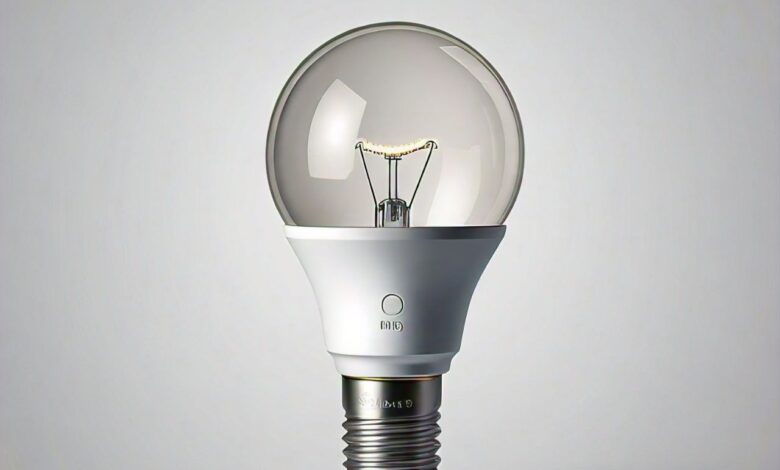Advancing Agriculture: The Power and Potential of LED Grow Lights

LED grow lights are specialized lighting systems designed to support and enhance plant growth. Unlike standard LED lights, which are used for general illumination, LED grow lights emit specific wavelengths of light that ares essential for photosynthesis and other plant growth processes. These lights are particularly useful in environments where natural sunlight is insufficient or unavailable, such as indoor gardens, greenhouses, and vertical farms.
Key Characteristics of LED Grow Lights
- Spectral Range: LED grow lights are designed to emit light in the specific spectral ranges that plants need most, particularly in the blue (400-500 nm) and red (600-700 nm) wavelengths. These wavelengths are critical for vegetative growth and flowering, respectively.
- Adjustability: Many LED grow lights offer adjustable spectrum settings, allowing growers to tailor the light output to the specific growth stages of their plants. This flexibility ensures that plants receive the optimal light conditions for each phase of development.
- Energy Efficiency: Like all LED lights, LED grow lights are highly energy-efficient, converting a higher percentage of electrical power into usable light compared to traditional grow lights such as fluorescent or HID (High-Intensity Discharge) lamps. This efficiency results in lower electricity costs and less heat production.
- Longevity: LED grow lights have a long operational life, often lasting up to 50,000 hours or more. This durability reduces the frequency of replacements and maintenance, providing a cost-effective solution for long-term plant cultivation.
- Low Heat Output: LED grow lights produce significantly less heat compared to other types of grow lights. This lower heat output minimizes the risk of plant damage and reduces the need for additional cooling systems, making it easier to maintain optimal growing conditions.
Types and Categories
Full Spectrum LED Grow Lights
Full spectrum LED grow lights mimic natural sunlight by providing a balanced light spectrum that includes all wavelengths necessary for plant growth. These lights are ideal for all stages of plant growth, from seedling to flowering.
Red and Blue LED Grow Lights
Red and blue LED grow lights focus on the specific wavelengths that are most crucial for photosynthesis. Red light promotes flowering and fruiting, while blue light supports vegetative growth. These lights are often used in combination to optimize plant development.
COB (Chip on Board) LED Grow Lights
COB LED grow lights are known for their high intensity and efficiency. They feature multiple LED chips packed closely together on a single board, creating a powerful light source that penetrates deep into the plant canopy.
Panel LED Grow Lights
Panel LED grow lights consist of multiple LEDs arranged on a flat panel. They offer a broad light distribution and are suitable for covering larger growing areas. These lights are popular in both small-scale and commercial operations.
Quantum Board LED Grow Lights
Quantum board LED grow lights utilize a large number of small, high-efficiency LEDs mounted on a flat board. They provide even light distribution and are known for their high efficacy and low heat output. These lights are ideal for both vegetative and flowering stages.
Technical Specifications
Wavelength and Light Spectrum
Understanding the wavelength and light spectrum is crucial for choosing the right LED grow light. Different plants have varying light spectrum requirements, and LED grow lights can be customized to emit specific wavelengths that cater to these needs.
Power Consumption and Efficiency
One of the significant advantages of LED grow lights is their energy efficiency. They consume less power compared to traditional lighting systems, translating to lower electricity bills and a reduced carbon footprint.
Lifespan and Durability
LED grow lights are designed to last for many years, with an average lifespan of 50,000 to 100,000 hours. This longevity reduces the need for frequent replacements, making them a cost-effective solution in the long run.
Heat Output and Cooling Mechanisms
LED grow lights generate less heat compared to traditional lighting options like HPS or fluorescent lights. This reduced heat output minimizes the risk of plant damage and eliminates the need for extensive cooling systems, although some high-power LEDs still require efficient heat management.
Applications of LED Grow Lights
- Indoor Gardening: LED grow lights enable year-round cultivation of plants indoors, regardless of external weather conditions. This is particularly beneficial for home gardeners and urban farmers who lack access to outdoor growing spaces.
- Greenhouses: In greenhouses, LED grow lights supplement natural sunlight, extending the growing season and improving crop yields. They provide consistent light levels during cloudy days or in regions with limited sunlight.
- Vertical Farming: LED grow lights are crucial in vertical farming setups, where crops are grown in stacked layers to maximize space efficiency. The precise control over light spectrum and intensity allows for the cultivation of a wide variety of plants in a compact area.
- Research and Development: LED grow lights are used in plant research to study the effects of different light spectra on plant growth, development, and productivity. This research helps in optimizing lighting conditions for various plant species and growth stages.
Latest Innovations
Smart LED Grow Lights
Smart LED grow lights integrate with digital technologies, allowing growers to control and monitor light settings remotely. These systems often include features like automated schedules, light intensity adjustments, and real-time data analytics.
Integration with IoT
The Internet of Things (IoT) has made its way into horticulture, with LED grow lights now being part of interconnected systems. This integration allows for seamless control and optimization of growing conditions, enhancing productivity and efficiency.
Advanced Cooling Systems
Innovations in cooling systems have led to more efficient heat management in high-power LED grow lights. Advanced cooling technologies help maintain optimal temperatures, prolonging the lifespan of the lights and ensuring consistent performance.
Innovations in Light Spectrum Technology
Recent advancements in light spectrum technology have led to the development of LEDs that more accurately mimic natural sunlight. These innovations improve the quality of light provided to plants, enhancing growth and yield.
Conclusion
LED grow lights have revolutionized the field of horticulture, providing an innovative solution for modern agriculture. They offer numerous benefits, including energy efficiency, customizable light spectrums, enhanced plant growth, and reduced heat emission. These lights are versatile, suitable for various applications such as indoor gardening, commercial greenhouses, vertical farming, hydroponics, and aquaponics. Despite the initial higher cost, their long lifespan, durability, and reduced energy consumption make them a cost-effective and sustainable choice in the long run. The latest innovations in LED technology, such as smart systems and advanced cooling mechanisms, continue to improve their efficiency and effectiveness, promising a bright future for this technology.

